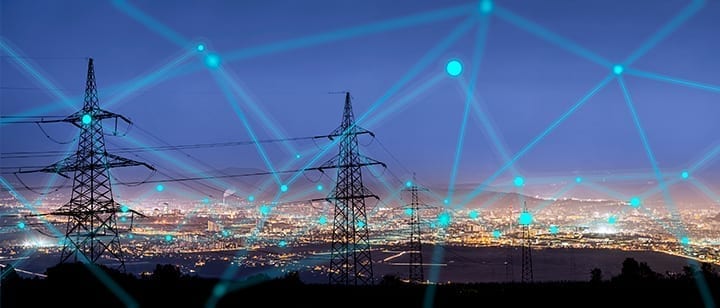The 5 Steps Utilities Should Take in 2021 to Prepare for a Carbon-Neutral Future
The post The 5 Steps Utilities Should Take in 2021 to Prepare for a Carbon-Neutral Future appeared first on POWER Magazine.

We're at the electric tipping point as electric stoves, vehicles, and construction equipment displace the fossil fuel guzzlers of the past. Yet, before a carbon-neutral future can truly take off, utilities and the electric grid need to innovate.
For the world to hit net-zero emissions targets by 2050, grid investments need to almost triple to $2.2 trillion by 2030, according to the International Energy Agency. More than a third of that needs to be spent expanding, modernizing, and digitalizing electricity networks. It's a heavy lift to generate and transmit that much power, but the groundwork starts in 2021.
Hitachi ABB Power Grids spoke with its customers to learn what's next in their renewable energy future. Across the board, in order to support electricity's increasing role as the backbone of the global energy system, customers need to invest in five core technologies now.
Energy StorageUtilities are looking at the value-stacking benefits of energy storage in 2021, seeing it as a core component of powering our carbon-neutral future. Storage that can perform multiple energy services at the same time will help deliver new revenue streams while igniting the path toward electrification. Investments and adoption in battery storage will drive more breakthrough applications in areas such as the commercial and industrial sectors where the convergence of smart cities, electric vehicles, and energy autonomy is rapidly accelerating the path toward electrification.
Automation and Communications SystemsNew residential and commercial use cases such as electrified transit systems and the ability to navigate grid complexities from renewable energy will need a strong communications system. Utilities are beginning to invest in automation and communications systems now to improve the reliability and efficiency of electricity networks. This technology can harmonize the entire electrical network, from generation and transmission all the way to distribution. Additionally, it enables remote monitoring and service for the grid, ensuring maximum uptime and safety, also making the industry more carbon-efficient. A strong communications system is also important for industrial power networks including railways, airports, and mining. These meet that goal.
Distributed Digital OperationsThe COVID-19 pandemic forced utilities to create a flexible, distributed workforce. This unexpected development has paid off in more ways than one, including making workers more comfortable with digital technology. Over the next year, utilities plan to continue on this digital transformation with an increase in autonomous operations to enable a fully digitalized utility worker. This includes dispatching field crews from home, and leveraging augmented and virtual reality to be remotely on-site" with customers.
Next-Gen Video AnalyticsA wave of new video algorithms and analysis this year came at just the right time. Utilities needed to make routine asset management, damage assessment, and documentation quicker, safer, and with fewer boots on the ground. Given the success of pilot drone programs over the past year, utilities are looking to improve their return on investment in 2021 by adding a layer of video analysis while expanding the pilot programs as states re-implement restrictions on social distancing. This video and drone infrastructure will help utilities better track and manage the influx of assets they'll see, keeping up with the increase in electricity use expected over the next few years.
Real-Time Grid AnalyticsDigital transformation, driven initially by the pandemic, will top many lists in 2021. Yet, the focus will be on software that crunches existing data sources with artificial intelligence and machine learning to determine exactly what is happening on the grid in real-time. Instead of siloed solutions, the sector wants to adopt a single solution that connects disparate data sources and offers full network control. The ultimate platform will combine workforce details, weather patterns, power generation trends, battery insights, and more. It will help utilities address the many challenges climate change is forcing upon us as well as prepare for our carbon-neutral future, driven by electrification.
We anticipate electricity use will soon return to pre-pandemic levels, bringing with it an influx of electric use unlike any that's been seen before. Smart utilities are placing these five technologies first in 2021, positioning themselves for the aggressive clean-energy and decarbonization goals both policy and public opinion have set.
-Bryan Friehauf is executive vice president and general manager of Enterprise Software Solutions; Claus Vetter is group senior vice president and head of Automation and Communication Products, Systems, and Services; Dave Goddard is head of Digitalization; and Maxine Ghavi is senior vice president and head of Grid Edge Solutions-all with Hitachi ABB Power Grids.
The post The 5 Steps Utilities Should Take in 2021 to Prepare for a Carbon-Neutral Future appeared first on POWER Magazine.